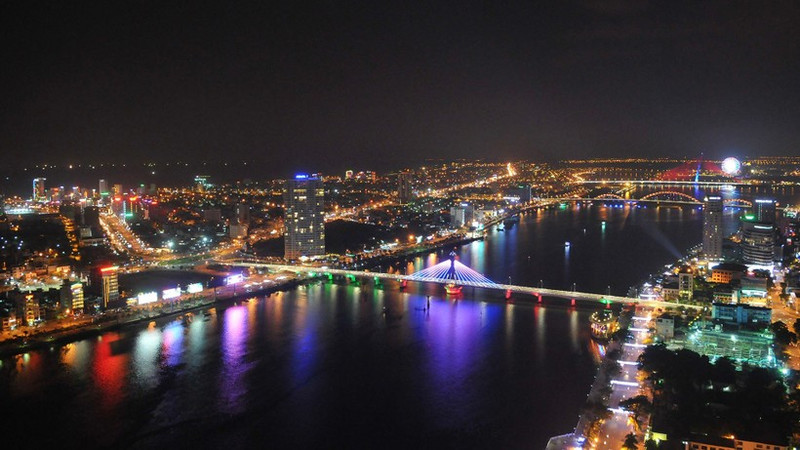The rapid development of urban systems and modern technology in Viet Nam has heightened the need for regulated lighting applications to ensure public health, environmental protection, and urban aesthetics.

The incorporation of advanced technology to manage emissions in urban lighting plays a pivotal role in shaping green cities for the future.
The need for innovation
At present, urban areas in Viet Nam primarily use fixed, controlled lighting systems. According to the Department of Technical Infrastructure under the Ministry of Construction, as of the end of 2024, urban lighting systems in grade III and above cities have achieved nearly 100% coverage on main streets and approximately 95% on alleys and lanes.
Despite this progress, many localities still rely on traditional lighting technologies, including compact fluorescent lamps, high-pressure sodium lamps, and metal halide lamps. These older lighting systems remain prevalent in high-rise buildings, shopping centres, service facilities, factories, production workshops, signs, and billboards.
Compared to LED technology, conventional lighting systems consume significantly more electricity, negatively impact the environment, and pose health risks.
Dr Le Hai Hung, a former lecturer at Ha Noi University of Science and Technology and a member of the Science and Technology Board of the Viet Nam Lighting Association, stresses that lighting engineering is an interdisciplinary field encompassing electronics, physics, and photometry. Professionals must also be skilled in control technology, artificial intelligence, and environmental factors related to lighting.
Recent studies highlight the effects of light exposure on visual health, showing that prolonged exposure to unsafe lighting environments may contribute to cancer cell growth. Research into vision mechanics explains how light interacts with photoreceptor cells in the retina — with cone cells for daytime vision and rod cells for night vision — underscoring the need for appropriate lighting solutions.
Additionally, short-wavelength, high-energy light spectra can cause skin pigmentation, accelerate ageing, and stimulate cancer cell activity.
Smart lighting solutions for a sustainable future

An aerial view of Hoi An City by night (Photo: VNA)
As the fourth industrial revolution unfolds, the push for smart cities and environmentally friendly energy solutions aligns with Viet Nam’s commitment to achieving net zero emissions by 2050. To meet these emerging demands, urban lighting must evolve.
Research suggests that integrating the Internet of Things (IoT) technology into urban lighting systems can offer effective control with substantial energy savings and minimised health and environmental risks.
Associate Professor Dr Nguyen Van Minh, Chief Digital Transformation Consultant of Rang Dong Light Source Vacuum Flask Company, explains that his firm has developed an "IoT lighting solution" capable of remote monitoring, full or partial system control, adjustable light intensity, real-time management on GIS maps, and automatic fault reporting. Importantly, this system functions independently even if disconnected from the control centre.
Some of these models have already been deployed in Ho Chi Minh City and Ben Tre Province, leading to a 70-80% reduction in management, operational, and electricity costs, while also minimising environmental emissions and improving overall efficiency.
Experts advocate for synchronised solutions that integrate energy-efficient and environmentally friendly lighting technologies. These measures include adopting intelligent management and automation, researching renewable energy solutions, incentivising private sector involvement in urban lighting development, regulating emissions, and strengthening the oversight of lighting activities that threaten urban aesthetics or public health.
To support this transition, the government must establish a regulatory framework for the effective investment and development of urban lighting infrastructure, alongside policies for financing, renovating, and maintaining these systems.